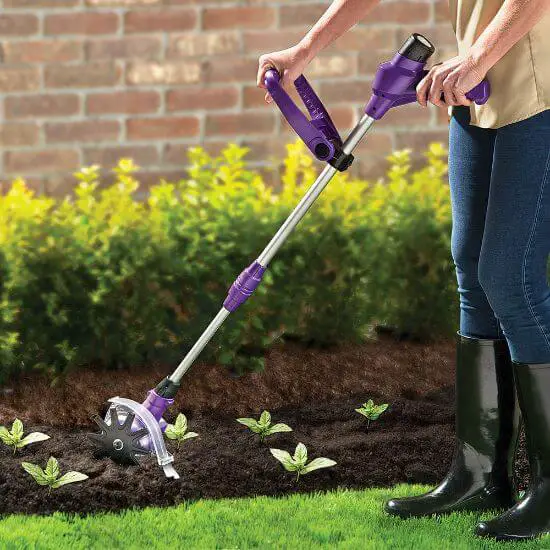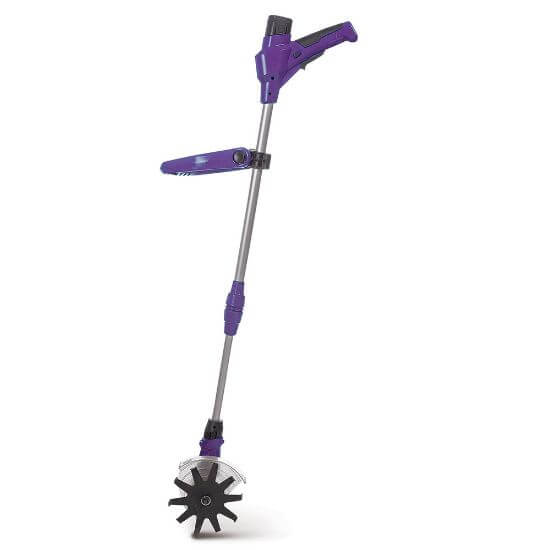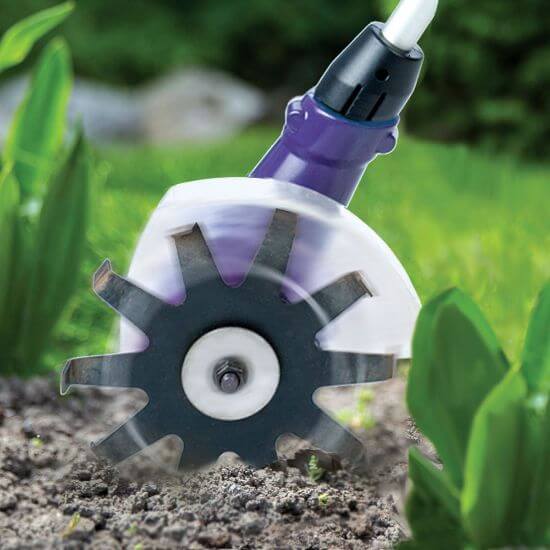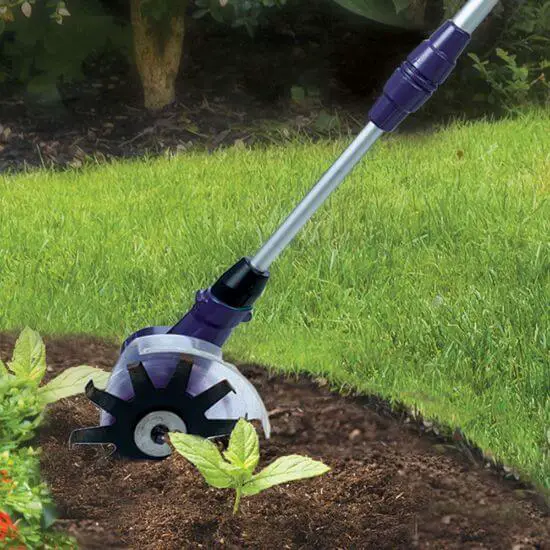This is the battery-powered tiller that enables gardeners to effortlessly pull weeds and nurture flower beds without putting strain on their backs or having to kneel in an awkward position.

This compact and lightweight gardening equipment requires much less muscle than a garden hoe or bulky motorized tillers, and it can easily reach the rear of raised beds with one hand. It can also squeeze between closely planted rows of plants.

As you squeeze the pistol handle of the tiller, the hardened steel blade with a diameter of 6 inches begins to spin at 200-220 revolutions per minute. This allows you to quickly break up soil, remove undesired plants, and mix in mulch.

The shaft, made of aluminum, extends from 38 inches to 44 inches, making it suitable for gardeners of varying heights. Moreover, an adjustable auxiliary grip offers additional support.

After being charged for one hour in the AC docking station, the detachable lithium-ion battery with 10.8 volts of capacity provides power for between 20 and 35 minutes.
Tilling a garden involves preparing the soil by breaking it up and making it loose enough for planting. Tilling helps to improve the soil’s texture and aeration, which can lead to better plant growth and yield. Here are some steps to follow when tilling a garden:
- Choose the right time: Tilling is best done when the soil is dry enough to crumble in your hand but not so dry that it’s hard and difficult to break up. Avoid tilling when the soil is too wet, as this can cause soil compaction and damage soil structure.
- Clear the area: Remove any debris, rocks, or weeds from the area you want to till. This will make it easier to till the soil and prevent any unwanted plants from growing.
- Mark the boundaries: Mark the boundaries of the area you want to till using stakes and string. This will help you stay within the designated area and prevent you from tilling outside of it.
- Use a tiller: A tiller is a machine that breaks up the soil and makes it loose enough for planting. It’s available in different sizes, and you can rent one from a local hardware store. When using a tiller, move it slowly in a straight line, overlapping each pass slightly. Tilling should be done to a depth of 6-8 inches.
- Add amendments: Once the soil is tilled, you can add soil amendments like compost or fertilizer to improve its quality. Spread the amendments over the surface of the soil and mix them in with a rake or tiller.
- Level the soil: After adding amendments, level the soil by raking it smooth. This will help ensure that water is distributed evenly throughout the garden.
- Wait before planting: Wait a few days before planting to allow the soil to settle and any weeds to sprout. Remove any weeds that emerge before planting.
In summary, tilling a garden involves choosing the right time, clearing the area, marking the boundaries, using a tiller, adding amendments, leveling the soil, and waiting before planting. By following these steps, you can prepare your soil for planting and ensure that your garden is healthy and productive.

